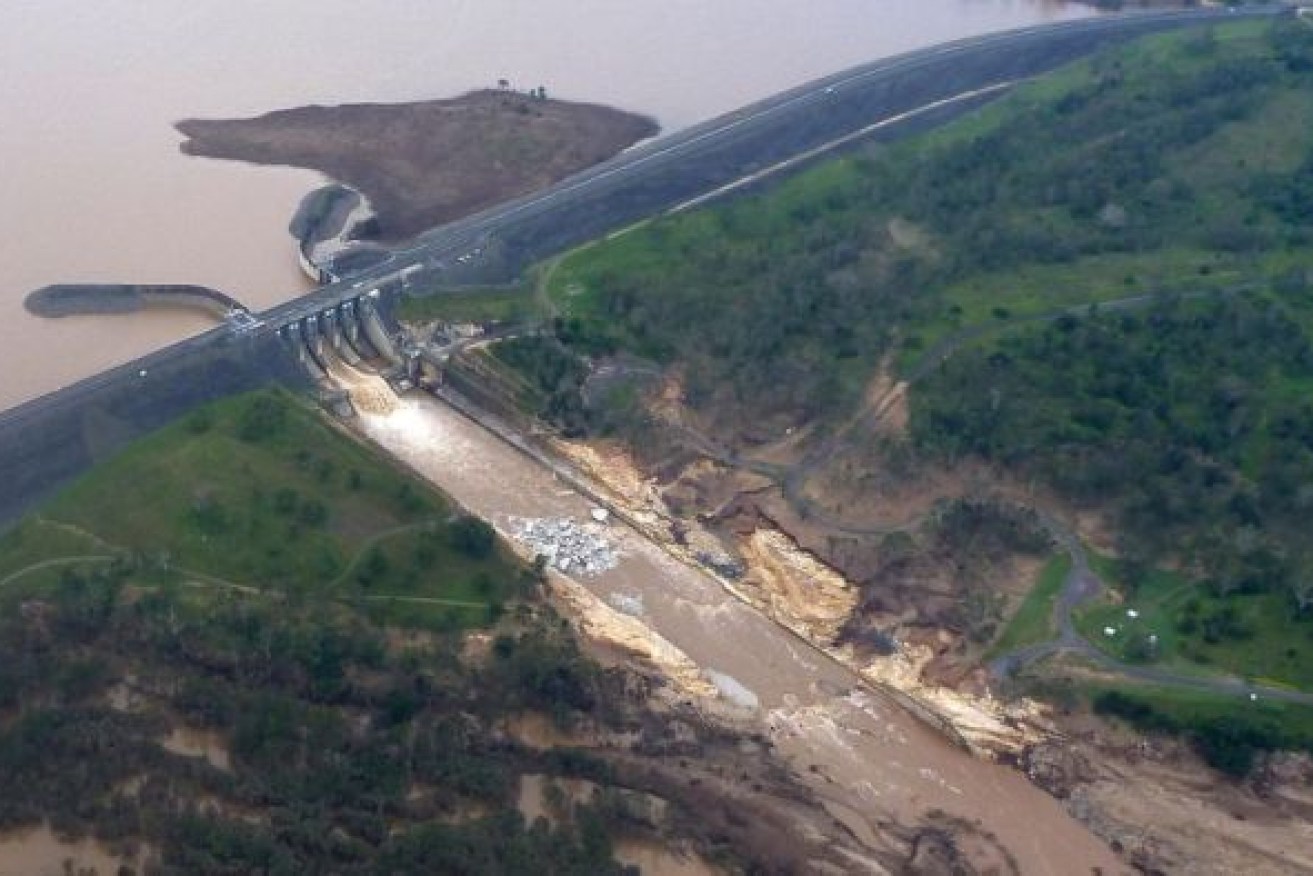Flood engineers breached ‘common sense and manuals’, court hears

Water pours from a floodgate at Wivenhoe Dam after the 2011 flood. Photo: AAP
Common sense and dam manuals were ignored by flood engineers during Queensland’s 2011 deluge, according to a class-action lawsuit aiming to secure hundreds of millions of dollars in damages for victims.
Launched in Sydney on Monday, the case comes nearly seven years after thousands of homes and businesses in Brisbane, Ipswich and the surrounding areas were inundated by swirling, muddy floodwaters.
When the gates of Wivenhoe Dam, west of Brisbane, were opened on January 11, the water released reached an extraordinary rate of 7464 cubic metres per second – more than double what it was only nine hour earlier.
Julian Sexton SC for the plaintiffs told the NSW Supreme Court the “drastic action” was necessary because engineers didn’t take into account the best available rainfall forecast information when deciding if they should make precautionary releases days before.
“In short, when the flood engineers did eventually take action … it was too late and too little,” he said during an opening address on Monday.
Case contends dam manual’s were ignored
The case, launched by Maurice Blackburn on behalf of about 6000 businesses and people, will argue engineers acted negligently and ignored the dam manual in the days before the gates opened.
The manual’s primary objectives are, first, to ensure the dam’s structural integrity, but, second, to provide “optimum protection of urbanised areas from inundation”.
Third on the list of objectives is to minimise the disruption of rural life.
Mr Sexton said engineers were initially concerned about avoiding flooding over rural bridges but didn’t give any real consideration to the higher-level objective of protecting urbanised areas.
He said the best available forecast information – which included four- and eight-day predictions warning of heavier falls – were ignored.
“That is not only contrary to the manual but contrary to common sense,” Mr Sexton told the court.
It is a matter of simple common sense when operating dangerous equipment to take precautions against catastrophic harm which is foreseeable and not insignificant and which has a better-than-chance prospect of occurring.”
Seqwater chief executive Donna Gregory maintained the engineers did an “extraordinary job in the most difficult and demanding circumstances” and was confident they would be vindicated.
“Our operation of the dams and the release strategies adopted by our engineers significantly mitigated the flood,” Ms Gregory said in a statement.
The flooding was the result of extremely heavy rainfall across upstream and downstream catchments and not the operation of the dams, she added.
More than 78 per cent of Queensland was declared a disaster zone during the floods from December 2010 to January 2011, which claimed 35 lives. More than 2.5 million people were affected.
A commission of inquiry found Wivenhoe dam’s manual was not properly followed leading up to the flood’s peak.
However, Maurice Blackburn class action principal Rebecca Gilsenan said the inquiry wasn’t set up to answer the question of whether the dam was operated negligently.
The trial, before Justice Robert Beech-Jones, is being heard in NSW because Queensland does not have a class action regime. The hearing continues on Tuesday.
-AAP








